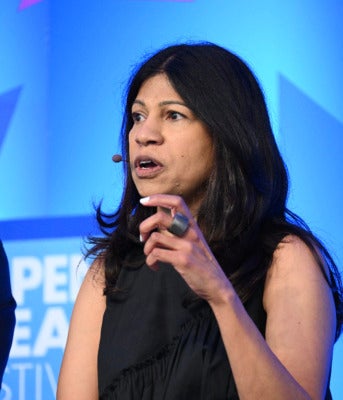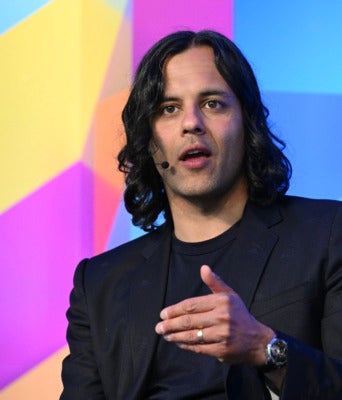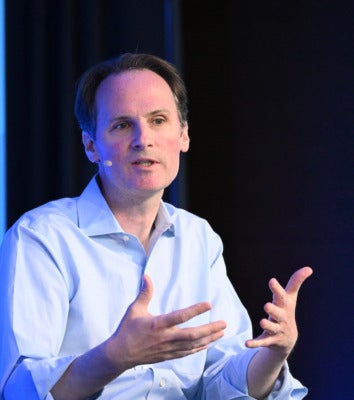Allowing everyone a fair chance at economic prosperity and upward mobility is a goal we can all support. But how?
Every individual in every community in the US deserves the ability to benefit from a strong economy. That includes having access not only to labor and educational opportunities, but to capital markets that can provide a way to save and grow wealth. But the numbers show that this isn’t happening; in the United States in 2023, the bottom 50% of the income scale owns just 2-3% of the country’s total wealth.
To provide every person with access to capital markets, we’ll need to drastically improve the systems, practices, and policies that define the US economy. At this year’s Aspen Ideas Festival, Ida Rademacher, Co-Executive Director of the Aspen Institute Financial Security Program joined Baiji Bhatt, Co-Founder and Chief Creative Officer of Robinhood; John Palfrey, President of the MacArthur Foundation; and Lata Reddy, SVP of Inclusion for Prudential Financial, where they discussed obstacles and opportunities related to broad financial inclusion.
Broaden the customer base for financial products.
Lata Reddy’s career path of building equity into systems brought her into finance, where she sees inclusion as a social justice issue. While discussing Prudential’s goal of becoming a global leader in expanding access to retirement, insurance, and savings, she acknowledges the obstacle of having a customer base that has historically skewed towards mass-affluent groups. “What we are trying to do internally is have the conversations that need to be had to change the mindset about what fundamentally constitutes a viable customer.” Because the industry has been set up to find customers based on their income and assets, says Reddy, “The way we go after consumers in the marketplace…is fundamentally flawed, especially with the extreme inequalities we’re seeing today.”

Lower barriers for entry.
With first-hand knowledge of the systemic barriers to wealth building, Baiju Bhatt spoke of his vision for a product that could bring more people to the table to help balance financial inequities—and wasn’t overly incentivized to just serve wealthy customers. “[My partner and I] came to the US because our families saw an opportunity for upward mobility in this society,” says Bhatt. “That was a really big deal for us, and was something that we thought a lot about when we were building Robinhood.” He believes Robinhood’s success with offering commission-free trades for small investors shows that it is possible to create a business that helps groups who need it while also being profitable in the long term.

Give people money, and let them spend it.
Though Bhatt and others are creating new tools for inclusion, there are tried-and-true methods that private and public sector companies can use to support economic prosperity for historically excluded groups. John Palfry spoke about how the John D. and Catherine T. MacArthur Foundation creates opportunities with their capital through grant giving, impact investing, and investing the family’s endowment. Palfry used their famed “Genuis Grant”—a no-strings-attached $800,000 that individuals can do anything with—as an example. “I think this is an important way to think about philanthropy,” he says, “actually just giving the money and trusting the person to do what’s necessary for their community.” 
Bhatt, Paltry, and Reddy show that the path to financial inclusion can—and must— take multiple forms. From tech startups to private foundations to household names in financial services, participation from private and public sector groups is key to balancing the scales. To learn more from this deepdive into democratizing wealth, watch the video here.
Three of the Aspen Ideas Festival themes were explored on this panel: Driving the Economy Forward, We the People, and The Power of Design. Explore more ideas about the inclusive economy from the Ideas Festival here.

